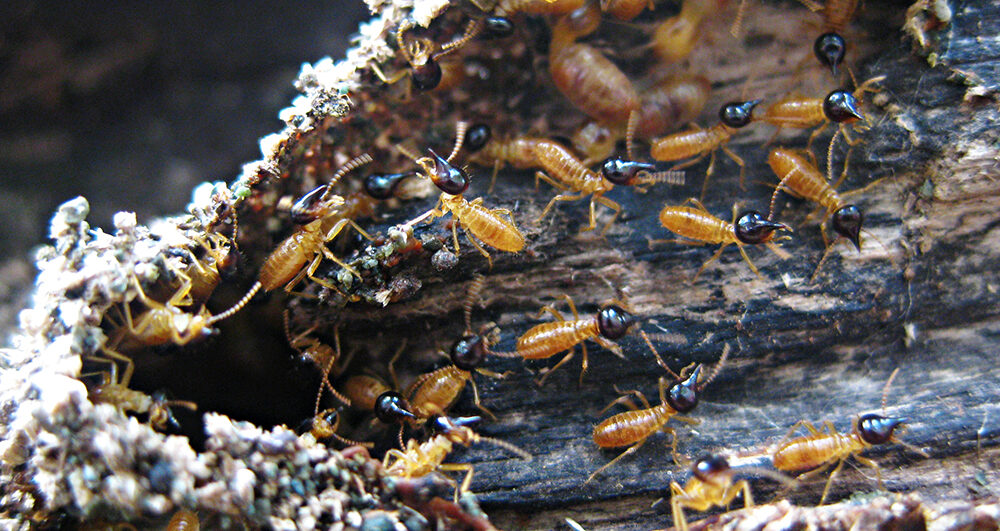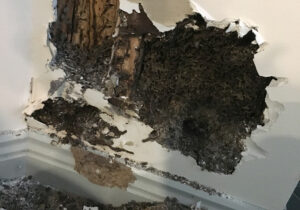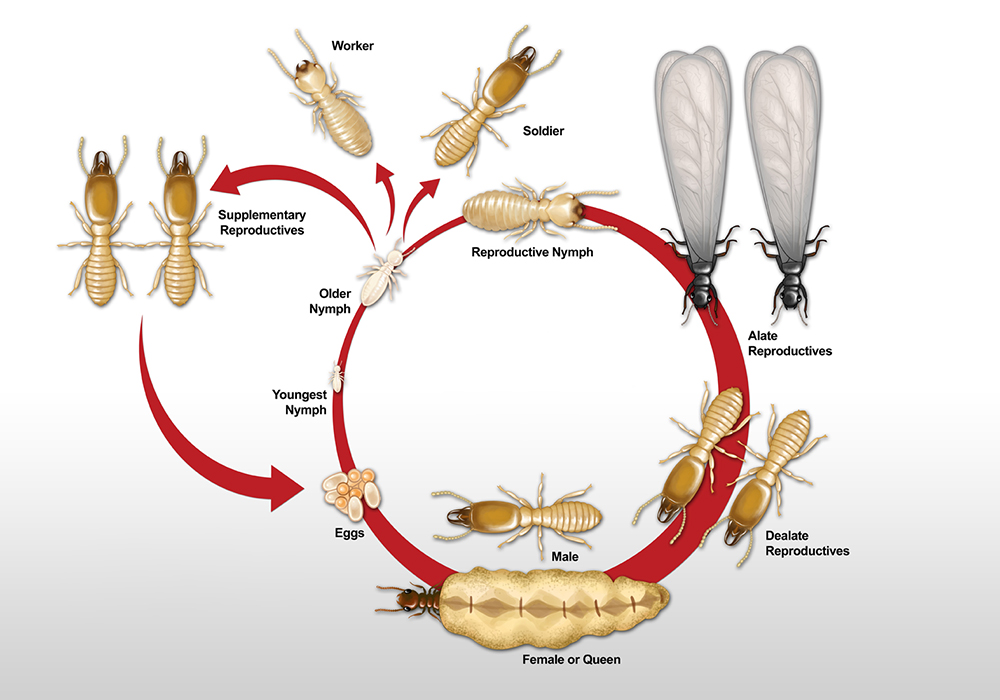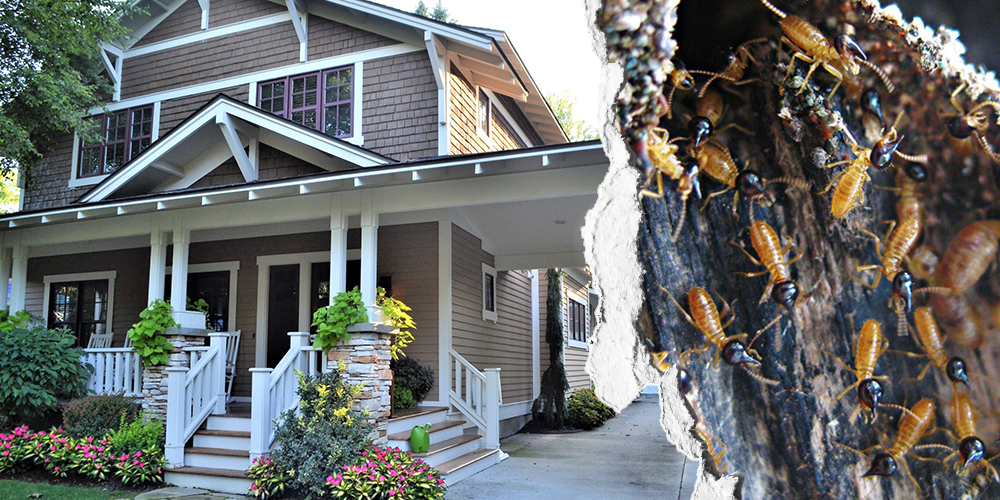
Termites
Almost every Australian home may be at risk of termites, but do not lose hope. We have a range of services to Identify, eradicate, prevent, and protect your home from the termites. Our specialised technicians are highly experienced with termites and can provide you with the solutions to keep your home safe and help you sleep easy.
If you would like a localised and specific management plan please call our account managers on (02) 96350477.
Termite inspection
Annual termite inspections are essential for early detection of termite activity on the property to prevent the potential for large scale damage and expensive repairs. Inspections also assess the conditions that make a property more susceptible to timber pests and ways to minimise the risk of attack. A great majority of homes in mainland Australia are at risk from termite attack.
The CSIRO recommends a competent pest inspection at least on an annual basis and in some cases more frequent depending on your risk of termites.
A comprehensive annual termite inspection is the best protection against termites. It can detect termite activity and prevent long term damage to your property.
Our termite inspection service
Our Termite Control Technicians use their experience and professional training to carry out a comprehensive inspection of your home or business premises. Termite inspections are carried out by Termite Control Technicians who not only have on-the-ground experience, but who are required to train continually with in-depth local expertise, so they will always know what’s going on in your area. A full written report is provided to you at the completion of every termite inspection.
Signs of termites
Termites aren’t out in the open. They like an environment that is dark, humid and protected, which is what makes them so hard to find – until it’s too late.
That’s why an annual termite inspection is so important. There’s no substitute for a qualified and experienced termite expert performing a comprehensive termite inspection.
Termite damage
Termites leave signs of their presence and often it’s their damage that is seen, rather than the actual termites.
Here are a few common signs of termites that you might see (or hear) around your home or business:
- Papery or hollow sounding timber – When termites consume timber, they eat from the inside out leaving a thin veneer of timber or paint. When you knock or tap on an area that has termite damage, it will sound hollow or papery due to parts (or all) of the timber having been eaten away.
- Your vacuum goes through the skirting board! – …or your finger presses through a door jam. These are some of the most common things we hear from customers as the first sign of termites. As termites have eaten away the structural integrity of the timber, such as a skirting board, door jam or architrave, bumps or pressure against them will easily cause damage.
- Tight fitting door or hard to open window – As termites devour timber, their excrement or ‘mud’ creates a protective environment that traps heat and moisture. This causes timber to swell, making it harder to open a window or close a door.
- Cracks in the cornice or door jams – As termites eat away the timber in your walls or door jams, it causes a loss in structural integrity and cracks form.
- Termite mud – Termites construct ‘mud’ tunnels to provide themselves with a safe environment to travel to or protect their food sources.

How to identify termites
Termites are very small and similar in size to ants, which often leads to confusion. Owing to their secretive nature, termites can be hard to detect, especially with an untrained eye. You are actually far more likely to spot the signs of termite damage before you spot termites themselves.
Termite species vary in habits, preferred food, size, body characteristics, colour and even parts of their lifecycle. There are some general characteristics, however, that are similar and can be used to identify termites and tell them from ants or other insects.
This page describes the different life stages and castes of termites and shows you how to tell flying termites from flying ants.
What do termites look like?
As with any other pest, correct identification ensures the use of the most effective control methods and allows you to choose the most appropriate prevention steps to try and avoid problems in the future.
Termites have several stages in their life cycle from egg to adult and they also have different types, called castes, which have different roles in the nest and look different. Therefore it is important to recognise the different types of termite that are present in one colony.
Termite treatment
If you find yourself under attack by the destructive nature of termites, you want someone you can trust to quickly restore your sense of comfort and safety. Our termite treatment plans are tailored specifically for your particular needs. A termite colony can consume 5g of wood per day. May not sound like much but without treatment, they can remain in a property, undetected, for years.
Do you think you have termites? Don’t waste time, book a treatment now with one of our experts
Our termite treatment plans are the best way to take action against a termite attack. One of our termite experts will recommend a specific solution that best suits your individual situation.
In-ground termite monitoring and baiting
This plan is a form of prevention and treatment. It involves the use of unobtrusive termite bait stations, which are placed around the perimeter of your home or structure to detect termites.
What you need to know:
- Installation of in-ground monitoring and baiting stations may require holes to be created in concrete and paving.
- You will be provided with a Home Pest Control Service folder that will detail your monitoring and baiting program. Your Termite Expert will update this folder with a service report at each visit, ensuring that you always have the important and up to date information at hand.
Above ground baiting
If termite activity is found, an above ground baiting solution can be used. Above ground bait stations are placed on termite activity within the home or other structures. The termites consume the bait and take it back to the nest, therefore infecting and eliminating the colony.
The bait inside the stations is highly palatable to termites but non-toxic to pets and children.
Pre-construction termite protection
1 in 4 Australian homes will be affected by termites in their lifetime. It is a fear triggered by the need to provide security and protection for our home and family.
As such, the use of a pre-construction termite protection system is a huge selling point for new homes and is driving the growth of the industry across Australia.
Providing long-term termite protection
We work with builders to install effective products, and deliver consistent and quality service across all construction projects.
Service benefits:
- Cost-effective – Our dedicated installation team focuses on being a business partner that saves time and money for our building customers.
- Experience – Our highly dedicated team of professionals have extensive experience in the pre-construction industry.
Which termite solution is right for you?
We have a suite of pre-construction termite systems to protect your project, whether it’s an extension, renovation or new home, on a concrete slab, bearers or joist. Contact us today to find out how we can help protect your new build.
Pest Inspections
Before you purchase a new home, a pest inspection can be essential to identify any pest activity, in particular from termites, which may be causing internal damage to the structure of the property. Termites affect 1 in 4 Australian homes in their lifetime. We recommend a professional pest inspection to ensure that the home you’re looking to buy isn’t one of them.
Timber Pest Inspections
Our Timber Pest Inspection will identify any threats to the property, whether they are already in the home or nearby. We check a home for a loss of integrity in its timber structure caused by termites, borers, chemical delignification (common in industrial areas) and fungal decay (such as black rot).
The information provided should be able to help you make an informed decision about your purchase.
Details Included in a Report
- Pest activity or loss of structural integrity detected in the roof void, subfloor, home interior and exterior areas (including external buildings)
- Identified threats that are conducive to introducing timber pests to your home
- History of timber pest treatments carried out on the home
- Recommendations for action
- Important maintenance advice
Call us now on (02) 96350477 to talk to one of our professionals.
Monitoring
Monitoring is a critical part of your overall Termite protection strategy. Keep on top of any termite activity by placing and monitoring bait stations around your property.
Chemical Barriers
Chemical termite barriers involve creating chemically treated zone around the entire perimeter of the building. The liquid chemical can be applied to the soil under concrete flooring or around the perimeter of the building. It is important to first complete an inspection to ensure that there is no termite activity within the zone prior to application.
Physical Barriers
Physical termite barriers can be installed prior to construction of a new build or extension. Barriers can be in the form of membranes, foams, sealants or a combination of these and are designed to prevent concealed access into a building. Physical barriers provide the least-toxic method of termite barrier treatment for new buildings or extensions.
Reticulation Systems
Termite reticulation systems are series of underground pipes positioned around a building for the purpose of providing ongoing protection against termites.Termite reticulation systems can be added to new builds or extensions and can be continuously replenished with a liquid chemical to form a barrier.



